William Cook's Blog, page 15
January 27, 2012
Gut Full
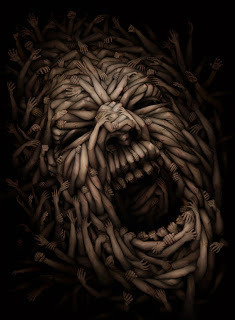 "Bigger Fish Eat The Little Ones" By Anton Semenov.
"Bigger Fish Eat The Little Ones" By Anton Semenov.
For whatever reason, I was at a party. Vodka was the choice drink for the evening, combined with multifarious concoctions aggressively provided by strange fellow guests. Different colored cocktails passed expectantly, or should I say were thrust, into my unsteady hands. I was drunk as usual, this time however it was a wary state of drunkenness, more like a stoned feeling – that is, paranoia began to guide my perceptions. Nonetheless, I was drunk, stumbling, and borderline belligerent. After a while I realized in my stupor that this wasn't a 'normal' party. The guests looked strange. A lot of them wore outlandish masks and there were as many different nationalities, as there were cocktails. Mainly, scrawny middle-eastern men wearing kaftans and the silent procession of their beautiful wives, hidden beneath black silk burqas. A few Westerners were dressed as Arabs and there was a distinguishable Afghan here, an Indian there, a Turk or Arab over there. The background lost its scenery and darkness framed the scarred features of the many guests who now appeared to be in slow motion. The sound of a crackling album on an old phonograph broadcast shrill trumpets and an echoing bossa-nova beat, the sound of glasses clinking, women's laughter, deep mumblings of the men's alien dialects, all merged into a noise not unlike the booming of waves under a jetty. On the stone steps of an old church I came to, next to someone I didn't recognize. I felt I knew her somehow, something vaguely familiar. She certainly behaved as if we were old friends. She was of European heritage, possibly part Jewish or polish, with a soft clipped English pronunciation. I assumed she was an English teacher like myself, stranded in a strange land. I had still not figured out where the hell I was – the architecture surrounding us looked Spanish or Mediterranean – I thought, maybe, Tangiers or some such place. As we walked I could see that it was a coastal town, the blue ocean meeting with the other blue of the sky on the vast horizon between the buildings. Eventually we made our way to a large faded lime building that looked like a bathhouse, its crumbling plaster façade and Mediterranean style flat roof, gaping arched entrance. I stood on the steps and wondered what the time was, it appeared to be late afternoon and I was still drunk. What had happened at the party? Where had the last hours gone? Who was this person following me around? What was that stench? Where the hell was I? Strangely enough the place reminded me of a place I had been before – an open-air ocean bathhouse set in the surf at Newcastle in Australia. This, however, was definitely not Australia. We left the twilight behind and entered the cavernous entrance – the smell, of chlorine and sweat mingled with urine, pervaded my senses. The foyer opened into a high roofed room lit with yellow light bulbs, dangling starkly from the shadowed heights. The facing grey brick wall was lined with shower faucets, a gaseous vapor emanating from their stained lips. Taps spaced at regular intervals – where the end one should have been, there was a plastic curtain surrounding the sound of splashing water. Billowing steam smoked its way towards the dark realms of the ceiling. The place stank like a bad place and looked like an opium den! Meanwhile, after trying all the other taps, my elderly companion suggested we shower together and began to disrobe his milk white body, his flesh like molasses dripping from his emaciated frame. He looked up at me as he stepped out of his underpants, dark eyes filled with urgency, his heart visibly beating, a pulsing lump of bloodied gristle, blinking at me from the gaping flap of skin, slapping against the glistening bones of his ribcage. I declined his invitation and, looking for a toilet desperately, excused myself to urinate and pissed a stream of blood that seemed to take an eternity to finish. The need for fresh air led me back outside to a warm breeze and the sound of the waves gently sieving the white sand. I walked down some steps between two palm trees and pissed against again against a grassy bank that hugged the beach. There were a few people walking around in the dusky light – no one seemed to notice me. I felt invisible. Then I was drunk again, lying on the soft cold sand, an empty vodka bottle discarded at my side. I rose to my feet and stumbled back toward the bathhouse, feeling in need of a wash and a drink of water. I saw my former companion was still in the shower cubicle, his feet visible under the plastic curtain, buried in flaking pieces of his rank flesh. Ankle deep. I was drunk, feeling grimy and too tired to care about decorum. I opened the curtain and removed my shirt and pants. No sooner had I disrobed, he quickly gathered his belongings and casting me a fleeting glance, his skeletal face looked like he had scrubbed it clean of any last scrap of flesh. Bleached bone made his former ugly face quite presentable now. A staring glutinous mess, shone out of the depths of his eye-socket as he wildly glanced over his bare-boned shoulder. He hunched forward and scurried from the cubicle like a cockroach. I didn't care, I wanted the shower to myself and being naked with other males was not normally within my sheltered comfort zones. Besides, I had caught a glimpse of myself in the chromed steel cistern. I had mutated. I turned to step into the shower and saw myself full frontal in the mirror on the wall. I gasped, nearly collapsing. I stood, white faced, dark circles around my inflamed eyes, every bone in my face visible under parchment thin skin stretched taut. Bruises covered my ribs and a large cut across my hip. I focused – a bloody smear slick across my top lip, looking closer – flecks of dark blood covered my face, blood still ran across the bridge of my nose and from the cut in my lip. My eyes were glazed and a dull red color filled the cornea. There were puncture wounds on my neck about 2-3 centimeters in length, the blood coagulated on some, others still fresh. My eyes shifted slowly from the reflection of my face to the gaping wound in my chest. My stomach churned, suddenly aware of a dull pain between my ribs and a terrible empty feeling in the pit of my stomach. There were deep slash marks across my chest and just below my sternum. Near my lower ribs was a central puncture mark bigger than the rest, it must have been deeper for its width was twice that of the others and the caked blood around it was black. I watched in horror as my fingers probed the flaps of skin that hung either side of the wound until both hands could grip the edges and pull back on the inflamed tissue, tearing my own flesh. I could feel my fingers beneath the bones of my lower ribs but felt no pain, just a tension in my biceps as my strong forearms pried apart the bones and skin, revealing what lay beneath slowly, my ribs popped and cracked as they broke, one by one. And then the pain did start to burn inside me. Something blinked back at me and I simultaneously felt something, not dissimilar to 'The Butterflies'. It was the eyelids brushing my intestines in fact. I stared back at the reflection with difficulty, a red haze beginning slowly to stain my vision. The black eyeball, centered in a perfect white orb, wombed with two engorged crimson eyelids, complete with foot-long eyelashes, looking rather like porcupine quills, blinked back up at me from my bubbling intestines, slowly dripping from my barren pelvis, plopping like fish on the floor as they spilled from my gut, blood pissing everywhere. Slowly, but deliberately, the glistening bloodshot orb winked up at me and then, and only then, thank Christ, I succumbed to the white light of unconsciousness.
Published on January 27, 2012 02:23
January 26, 2012
Latest Amazon Review for Blood Related
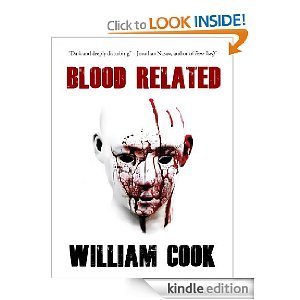
5.0 out of 5 stars The Family That Slays Together Becomes a Legend, January 25, 2012 By Bruce J. Blanchard "Darkenwulf" (Des Moines, IA) - This review is from: Blood Related (Kindle Edition) It started off so simple. Dr. Mary Brunswick was the court appointed psychologist to define the state of mind of one Charlie Cunningham. During the course of her talks with Charlie, she meets his twin, Caleb. Caleb consults her later on and tells her a story she will not forget, a story of violence, murder, abuse, mutilation, insanity, abduction, and conspiracy. A story that covers a family background beginning with Grandfather Samael, father Errol, and his two sons Charlie and Caleb. What begins as a subplot and gains an increasing importance is a family feud between the Cunninghams and the Trumans, a family of cops and those who don't mind flying over the dictates of the law. What becomes more disturbing is this: as you read through the book, who are you rooting for - the long length of crimes commited by those in the death house on Artaud Avenue or the less than legal obsession by Ray Truman who will use any means to wipe out the family and their crimes.
The main character is Caleb. He and brother Charlie have been abused by both father Errol and mother Vera. They've been raised in an environment of murder, death, and torture. Throughout the story we identify with Caleb: his actions (mostly despicable), his feelings about his family relations, and a seemingly growing insanity fueled by drugs and alcohol. What remains is a story you can follow with Caleb's entries and excerpts from newspapers and crime books. Blood Related is an awesome and ambitious project in the ways and means of the psychopathic mind. A lot of us are looking for answers as why people kill the others around them and do the inhumane. Blood Related may help you in your quest, though the answers aren't easy ones.
This book is one that should Never be overlooked.
Read more great reviews here and try a free sample.
Published on January 26, 2012 11:43
January 22, 2012
Meet Cindy Keen Reynders - Writer
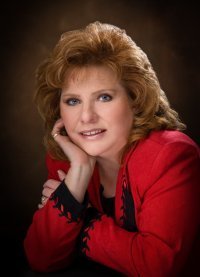 Cindy Keen Reynders
Cindy Keen ReyndersFor Cindy KeenReynders, writing has been, and always will be, her one true passion. Growing up, she discovered a love of words and found that she had an aptitude for turning those words into sentences. Cindy's latest novel to add to her 'Saucy Lucy' series, 'A Killer Slice', has recently been released on Amazon.
Over the years Cindy has won various writing contests and has also written for and edited numerous newsletters. She has also sold several non-fiction magazine articles to "True West" and "Wild West," as well as writing two earlier novels in the 'Saucy Lucy' series.
Cindy lives in Cheyenne, Wyoming with her husband, Rich, and her little dog, Ewok. Her first two books in the Saucy Lucy series are "The Saucy Lucy Murders," and "Paws-itively Guilty," are available through Amazon. She is looking forward to the release of her next novel, 'The Seven Year Witch', to be published early 2012 by Angelic Knight Press.
Cindy's future goals include being able to travel more as time allows and to write, write, write. She constantly challenges herself to develop more entertaining plots, characters and settings. Nothing pleases her more than to be able to tell a good story. If it touches someone's heartstrings and makes them laugh or cry, then she knows she's done her job.
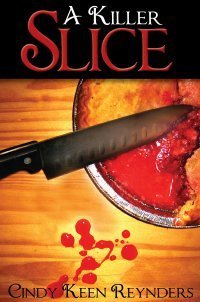
A KILLER SLICE by Cindy Keen Reynders
Lexie Lightfoot's move home to Moose Creek Junction, Wyoming, with her daughter, Eva, has been both a blessing and a curse. It's good to be near her family, even though Lucy, her opinionated, churchgoing sister, makes life interesting in a hair-pulling sort of way.
In the recent past, the sisters have called upon their amateur sleuthing abilities to investigate murders in the small community. If matters had been left to Sheriff Otis Parnell, Moose Creek Junction's incompetent sheriff, who just happens to be Lucy's husband, the cases would have gone cold.
When it finally seems the snoopy sisters can settle down to a normal routine, some spicy intrigue is tossed their way. During a shower baby shower the sisters are holding for nine-months-pregnant Eva at their small restaurant, the Saucy Lucy Café, a knock sounds at the front door. The young man waiting on the doorstep claims to be Lucy's long lost son.
Lucy is mortified, swears he's mistaken and quickly sends him on his way, but he refuses to leave her alone. When he winds up dead, the local police department considers Lucy a suspect in his murder. The sisters embark on yet another crime-solving adventure to clear her good name.
************************
Order 'A Killer Slice' from Amazon
Check out Cindy's blog or her website
Find Cindy on Facebook and on Twitter
Make sure to hook up with Cindy here to get all the latest news and info about her next novel, 'The Seven-Year Witch.'
****************
You can also read an interview that Cindy did with yours truly on her blog here.
Published on January 22, 2012 17:15
January 17, 2012
#Tumblr #Blood #Related by #William #Cook
Macabre Art by William Cook - Serial Killer Fiction - Blood Related by William...
BR Bytes
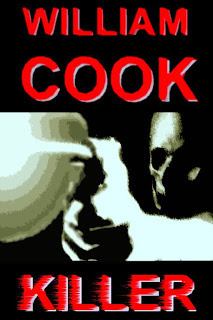 This was my original title for 'Blood Related' and my original idea for a cover.
This was my original title for 'Blood Related' and my original idea for a cover.
 A Banner if you feel like pimping ;) Please link to http://bloodrelated.wordpress.com
A Banner if you feel like pimping ;) Please link to http://bloodrelated.wordpress.com
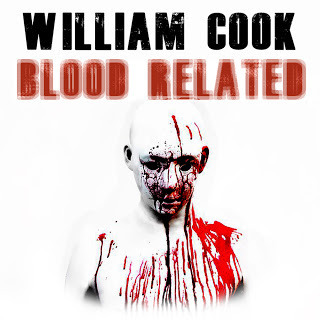 This was my original cover concept for BR before I handed it over to AKP
This was my original cover concept for BR before I handed it over to AKP
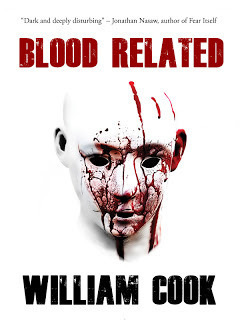 Final cover and title
Final cover and title
Serial Killer Fiction - Blood Related by William Cook
Available now from Amazon:
$3.99 Ebook edition: http://www.amazon.com/Blood-Related-ebook/dp/B006QG1WA4/ref=dp_return_1?ie=UTF8&n=133140011&s=digital-text
"Dark and deeply disturbing."
- Jonathan Nasaw, author of Fear Itself and The Girls He Adored.
"Blood Related is a nasty but nuanced take on the serial killer genre. Cook's bruising tale of twin psychopaths who are as cold as mortuary slabs is not for the weak-kneed."
- Laird Barron, author of Occultation and The Imago Sequence.
"A thought-provoking thriller."
- Guy N Smith, author of Night of The Crabs and Deadbeat.
"Great - Riveting - Amazing - take your pick. I just read William Cook's Blood Related for the second time. Both readings were followed with one thought, Wow. A horrific crime-filled tale of terror that makes us understand why we lock our doors at night, Blood Related is by far the best read I've experienced in years."
- John Paul Allen, author of Monkey Love and Gifted Trust
"Blood Related is a terrifying psychological thriller. William Cook is an author to watch."
- Mark Edward Hall, author of The Lost Village and The Holocaust Opera.
"William Cook makes serial killer fiction exciting again! Expert narrative, bursting with flare, originality, and enough passion and brutality that even a real-life serial killer will love this book … and it's twisted and complex enough to make you question your own sanity after the first intense read."
- Nicholas Grabowsky, best-selling author of Halloween IV and Everborn.
**********
For over two decades, Detective Ray Truman has been searching for the killer, or killers, who have terrorized Portvale. Headless corpses, their bodies mutilated and posed, have been turning up all over the industrial district near the docks. Young female prostitutes had been the killer's victims of choice, but now other districts are reporting the gruesome discovery of decapitated bodies. It seems the killer has expanded his territory as more 'nice girls' feel the wrath of his terrible rage.
Meet the Cunninghams …
A family bound by evil and the blood they have spilled. The large lodging-house they live in and operate on Artaud Avenue reeks of death, and the sins that remain trapped beneath the floorboards.
Ray Truman's search for a killer leads him to the Cunningham's house of horrors. What he finds there will ultimately lead him to regret ever meeting Caleb Cunningham and the deviant family that spawned him. The hunter becomes the hunted, as Truman digs deeper into the abyss that is the horrifying mind of the most dangerous psychopath he has ever met.
More info here on the Official 'Blood Related' site: http://bloodrelated.wordpress.com/

BR Bytes
 This was my original title for 'Blood Related' and my original idea for a cover.
This was my original title for 'Blood Related' and my original idea for a cover. A Banner if you feel like pimping ;) Please link to http://bloodrelated.wordpress.com
A Banner if you feel like pimping ;) Please link to http://bloodrelated.wordpress.com  This was my original cover concept for BR before I handed it over to AKP
This was my original cover concept for BR before I handed it over to AKP Final cover and title
Final cover and titleSerial Killer Fiction - Blood Related by William Cook
Available now from Amazon:
$3.99 Ebook edition: http://www.amazon.com/Blood-Related-ebook/dp/B006QG1WA4/ref=dp_return_1?ie=UTF8&n=133140011&s=digital-text
"Dark and deeply disturbing."
- Jonathan Nasaw, author of Fear Itself and The Girls He Adored.
"Blood Related is a nasty but nuanced take on the serial killer genre. Cook's bruising tale of twin psychopaths who are as cold as mortuary slabs is not for the weak-kneed."
- Laird Barron, author of Occultation and The Imago Sequence.
"A thought-provoking thriller."
- Guy N Smith, author of Night of The Crabs and Deadbeat.
"Great - Riveting - Amazing - take your pick. I just read William Cook's Blood Related for the second time. Both readings were followed with one thought, Wow. A horrific crime-filled tale of terror that makes us understand why we lock our doors at night, Blood Related is by far the best read I've experienced in years."
- John Paul Allen, author of Monkey Love and Gifted Trust
"Blood Related is a terrifying psychological thriller. William Cook is an author to watch."
- Mark Edward Hall, author of The Lost Village and The Holocaust Opera.
"William Cook makes serial killer fiction exciting again! Expert narrative, bursting with flare, originality, and enough passion and brutality that even a real-life serial killer will love this book … and it's twisted and complex enough to make you question your own sanity after the first intense read."
- Nicholas Grabowsky, best-selling author of Halloween IV and Everborn.
**********
For over two decades, Detective Ray Truman has been searching for the killer, or killers, who have terrorized Portvale. Headless corpses, their bodies mutilated and posed, have been turning up all over the industrial district near the docks. Young female prostitutes had been the killer's victims of choice, but now other districts are reporting the gruesome discovery of decapitated bodies. It seems the killer has expanded his territory as more 'nice girls' feel the wrath of his terrible rage.
Meet the Cunninghams …
A family bound by evil and the blood they have spilled. The large lodging-house they live in and operate on Artaud Avenue reeks of death, and the sins that remain trapped beneath the floorboards.
Ray Truman's search for a killer leads him to the Cunningham's house of horrors. What he finds there will ultimately lead him to regret ever meeting Caleb Cunningham and the deviant family that spawned him. The hunter becomes the hunted, as Truman digs deeper into the abyss that is the horrifying mind of the most dangerous psychopath he has ever met.
More info here on the Official 'Blood Related' site: http://bloodrelated.wordpress.com/
Published on January 17, 2012 00:37
January 11, 2012
Saucy Lucy Wisdom: An Interview with Horror Writer, William Cook
Saucy Lucy Wisdom: An Interview with Horror Writer, William Cook: Today I'm interviewing fellow Angelic Knight Press author William Cook, a very talented writer...
Published on January 11, 2012 12:39
December 30, 2011
Blood Related by William Cook - available now
Need some holiday horror/thriller reading?
 Amazon - Kindle
Amazon - Kindle
 Smashwords - all e-formats
Smashwords - all e-formats
 Don't have a kindle? No problem, download free app for phone, computer, reader etc
Don't have a kindle? No problem, download free app for phone, computer, reader etc
 Want more info, background stories, origin tales etc - click above
Want more info, background stories, origin tales etc - click above

 Amazon - Kindle
Amazon - Kindle Smashwords - all e-formats
Smashwords - all e-formats Don't have a kindle? No problem, download free app for phone, computer, reader etc
Don't have a kindle? No problem, download free app for phone, computer, reader etc
 Want more info, background stories, origin tales etc - click above
Want more info, background stories, origin tales etc - click above
Published on December 30, 2011 14:38
December 27, 2011
Angelic Knight Press: Blood Related
Angelic Knight Press: Blood Related: http://www.amazon.com/Blood-Related-e... Look what's up on Kindle! BLOOD RELATED by William Cook! At present, it's in the ...
Published on December 27, 2011 11:43
December 17, 2011
Modernism, The Waste Land, & Spiritualism
§ I.
In T.S. Eliot's TheWaste Land (1922), a society decays while humanity turns upon itself in thename of industry. Even that most rudimentary characteristic of human nature andexistence, sexual love, is reduced to a type of capitalist transaction of 'automated' experience. It is a lasting impression of humanityat its lowest and most fallible point. However, despite Eliot's reactionaryportrayal of the spiritual and cultural death of western society, The Waste Land is not without hope orredemption. Indeed, in the knowledge that the text itself will generate wisdom,through the process of understanding and interpretation, there is a certaindegree of optimism present.Modernism(particularly Modernist writing) was essentially a search for absolutes, orfundamental truths, about human existence and experience. Art (with a capital'a') was the idealized domain for this aggressive hunt; aesthetic autonomy,however, was far from the romantic notion of beauty as the purest aesthetic.Modernist idealism centered on language, or on the limits of language, as theaesthetic principle that governed the range and depth of their 'meta-fictions'.It was a theoretical dictum, flavored with euro-centric philosophy and anglo-culturalmorality that attempted to address the fallibility of the modern consciousness,and ask the age-old philosophical question: 'how do/should we exist?' Thisquestion was one which Eliot felt the need to pose and respond to in The Waste Land.Throughoutthe poem, an underlying spiritual quest is underway. With allusion to biblical,mystical, theological references and characters (e.g. St. Augustine,Ecclesiastes, Buddha, Madame Sosostris etc.), Eliot concludes the poem with anaffirmation of all things unknown, a 'shantih'. This spiritual motif is the organizing and thematic device by which Eliot structures the disjointedcontexts of western culture. Each sequence displays literary andclassical/mythological allusions that reflect a decaying society whilstpositing a philosophically spiritual affirmation of religious idealism, eitherin motif or analogy. The spiritualthemes and recantations subtly and forcibly emphasise the need forspirituality, in a society ignorant of its lack of faith and the consequentialconnection to social ills. AfterNietzsche's proclamation in Thus SpakeZarathustra (1883–1892) that "God is dead", and his recognition of the overriding human will and its tendency toward self gratification and sin, Eliotcontinued to address the questions raised by the German philosopher in regardto the state of his adopted nation. The use of biblical concepts and classicalideas is present in the description Eliot gives of a 'fallen' world wheredarkness reigns supreme. Through the clutter and chaos, discord and despair,light breaks through the haze and 'fog' of this Babylonian abyss. Itis not the 'western dream'§ II.
Modernist texts like Eliot's were part of adevelopment of an aesthetic sensibility, that was not merely an expression ofthe interior psychological world, but an experience in itself that forced thereader to decipher their own individual existence as much as that of the text.This reliance upon the reader to navigate their way through the dense forest ofmetaphor and allusion makes interpretation difficult in relation to thereader's own knowledge and experience. The author is needed to provide acritical compass to guide through the intellectual organization of the textthat would otherwise remain inert to the average reader. Hence, the courteousnotes Eliot put together in consideration for an audience that may not 'be inthe know', after writing The Waste Land. This in itself is asignificant aspect of Modernist literature; effectively it generates thenecessity for coherence and education through its use of complex symbolism,literary tradition, myth, and philosophy. When one attempts to interpret theModernist text, one also attempts to decipher the major (and minor) texts ofwestern philosophy, science, literature, and religion. TheWaste Land is constructed with literary remnants and images of a fragmentedwestern civilization that values materialism above wisdom. Apparently unrelatedreferences and contexts evoke a pervading sense of confusion and disharmony, ina cultural, social, and spiritual sense. Despite the negative impressions, allperspectives seem to end with a different proposition, or connection, to largerfundamental issues of human existence and meaning. These remnants are theliterary ramparts of Eliot's craft; used categorically and historically, theyform a profound literary image (or montage of images) of post-war Europe andLondon in particular. A dense allegorical landscape that is as much areflection of society (literary and social) as it is of Modernist literature, The Waste Land is the epitome of theModernist tendency in poetry of the Twentieth Century. Moreoverit is a poem consisting of differing viewpoints (from different sources) thatultimately and resolutely provides an overall perspective of a culture(western) without absolute ideals. It is a satirical depiction of a modernworld that is supposedly advanced with all its industrial, technological,scientific, and accumulated resources of knowledge. It is a world withoutcoherence and solidarity, despite this great historical capital, that The Waste Land addresses, with itsintellectual organization of sensibility and society. Paradoxically, the poem's complex web of intellectual andliterary meaning imposes its boundaries on any attempts at interpretation. ForEliot it is his coup de grace, his poetical entrance into the elevated world of'fine art' as defined by the institution of the literary canon. However, thereis a sense of affinity with those outside the institution within the poem. A seeminglymoral empathy with the people who populate his landscape of cultural woe andfragmentation. Itis the 'machine' of capitalist industrialization, which Eliot undermines in thepoem. This is perceived as the enemy of 'high' art; with its subtly coercivesocial structures and powers of mobilization, its ability to envelop wholenations, to process its individuals into social robots, to transform the livinginto the dead. Above all, The Waste Land attacksmodernity's capacity to 'dumb down' its masses, in order to increase economicproductivity at the expense of literacy, education, and its culture's producersthat are the writers, poets, and artists. It is a poem that requires (demands!)intelligence, literacy, wit, and above all a certain amount of courage, notjust in the reading but ultimately in the writing of it. Like Joyce's Ulysses, it is a work that is designedto achieve an absolute resolution of literary, aesthetic, and social malaise,that was so much a part of the early Twentieth Century period. Asis the case with most (if not all) Modernist literature, there is a heavyinvestigation and saturation of selected significant events of the past. It isthis quality of Eliot's poem that connects the reader to all humanity;especially the modern being, to a historical tradition and the "dialect of the[mythic] tribe". The final stanza of the poem is the best example of this. Thesolipsistic figure of the Fisher King; the 'every-man', the poet, stranded in The Waste Land is revealed "upon theshore, / Fishing, with the arid plain behind" (WL, V, 423-424). In this, the poem's finale, all the motifs,allusions, and language converge in a chaotic textual reconnaissance, notdissimilar to a battle zone:
LondonBridge is falling down falling down falling down Pois'ascose nel foco che gli affina Quando fiam uti chelidon--O swallow swallow Le Prince d'Acquitaine a la tourabolie Thesefragments I have shored against my ruins Whythen Ile fit you. Hieronymo's mad againe. Datta.Dayadhvam. Damyata. Shantihshantih shantih (WL,VI, 426-433)
The useof "shantih" is interesting, not only, because it is the final line to thepoem, but because of its characteristic conformity to the Modernist principleof discontinuity and metaphoric allusion. It has a phonetic resonance thatitself imparts meaning. It could be the tolling of a bell; the shuffle of thecrowd flowing over London Bridge, the ticking of a clock, the ebb and flow ofthe tide. Alternatively, it could represent "a savage beating a drum in ajungle",Underthe brown fog of a winter dawn,Acrowd flowed over London Bridge, so many,Ihad not thought death had undone so many.Sighs,short and infrequent, were exhaled,Andeach man fixed his eyes before his feet. (WL, I, 61-65)
Thus, withindividuality becoming socially detrimental and cultural foundations awry, thehope of unifying social values or of an autonomous moral ideal seems doomed.Eliot's explanatory note on the character of Tiresias gives the reader anapparent, yet unsatisfactory and somewhat misleading, insight into thetechnique used in employing such devices in the poem:
Tiresias,although a mere spectator and not indeed a 'character', is yet the mostimportant personage in the poem, uniting all the rest. Just as the one-eyed merchant, sellerof currants melts into the Phoenician Sailor, and the latter is not whollydistinct from Ferdinand Prince of Naples, so all the women are one woman, andthe two sexes meet in Tiresias. What Tiresias sees, in fact, is the substance of the poem. (Note to line 218)
Indeed,what Tiresias perceives, is the substance of the poem, in that his characteroccupies the majority of the middle section of the poem (hence his centrality).Eliot's notes prove somewhat ambiguous in relation to the text itself. Whilstthey do provide a certain amount of elucidation regarding literary referencesand modes the notes seem deliberately innocuous. They are almost salutatory intheir superficiality, in relation to the metaphoric density of the poem as awhole. This set of token guidelines traces the history of the English literarytradition, albeit at the expense of philosophical or theological explanation. Consequently,this has the effect of encouraging a wider interpretation that in turnquestions the possibility of connecting aesthetic appreciation with moralexpression. Thereare no conclusions however, no affirmation of an ideal world or society. Insinuationand suggestion are the only indicators of any logical answers to the illogicalproblems besetting The Waste Land. Inthis sense, Eliot has achieved an absolute of sorts in an artifact that is sometaphorical, that its politics defy definition. All that remains is the text;the aesthetic temporal object, that is as much from its own time as it is fromall. Like most other Modernist texts, the ideological goal has been achieved;the work has stood the test of time, to affect discussion and debate about fundamentalcultural and anthropological issues up to the present day.
§ III.
Poetryshould not interpret experience for the reader, it should provide the objectivemeans by which the reader themselves discover meaning. Ezra Pound in How To Read argued that rationality ofspeech, in science and in art, did not come from logic, but from thecombination or juxtaposition of objective images. This was the main Imagisttenet that Eliot himself endorsed in his essay on Hamlet. It was he whointroduced it as a significant critical term for use in discussions of art andliterature; he called it the 'objective correlative':
Theonly way of expressing emotion in the form of art is by finding an "objectivecorrelative"; in other words, a set of objects, a situation, a chain of eventswhich shall be the formula of that particular emotion; such that when theexternal facts, which must terminate in sensory experience, are given, theemotion is immediately evoked.Theartisan was not so, unless they could relay the complexities of the human mindthrough their art. Image must represent intellect and emotion in such a way, asto invoke the same response from the audience, without the guidance of theartist's persona or the dysfunction of the art. Therefore, poetry should notconcern itself with conventional representation and technique like iambic,regular rhythms. This was the main aspect of tradition the Modernist's wishedto revolutionize. Formal restrictions and convention was avoided and modernpoetry freed itself from the past, through the employment of the avant-gardeinfluenced vers libre (or 'free verse') as their characteristic literary mode. The Waste Landis perhaps the most poignant and effective example of the Modernist use andstyle of free verse in poetry; switching styles, languages, form, narration.The poem epitomizes the liberating use of allwords, language, and styles within a modern world where 'anything goes'. WhilstModernist verse addresses the world with language and images appropriate to themodern experience, it also feels free to use any thing from all literature todo so. If poetry was to communicate intellectually and popularly to a modernmetropolitan audience as well as tothe intelligentsia, then its ingredients would have to reflect the presentculture as much as any other reference to the past. Eliot's The Waste Land established a transformedtradition of modern poetry that influenced writers across the globe, especiallyAmerican poets like Hart Crane, and William Carlos Williams. Eliot's poem isthe main literary doctrine of the modern western consciousness of the earlytwentieth century.Itis a reflection of a time when language, culture, and society was in a state offlux; the sense of disharmony and instability conveyed, gives a historicallyaccurate picture of a society between wars and between poles of modernity.Cultural definition and identity occurs when the present redeems a reconcilablepast. This awareness, of the importance of the past to the continuation of aprogressive present, is deep-set within Modernism's fundamental idealism.Modernism's involvement with the urban environment reflects a realization thatsociety and its demands determine 'culture'. The opposite view for critics likeAndreas Huyssen, is that Modernism:
constituteditself through a conscious strategy of exclusion, an anxiety of contaminationby its other: an increasingly consuming and engulfing mass culture. Both thestrengths and weaknesses of Modernism derive from that fact.Modernisttexts like The Waste Land attempt tointegrate, whilst remaining true to intellectual and aesthetic principles, an industrialized capitalist market place without becoming part of the 'other'institution of industrialization. Modernist text resists the commonality ofmass-produced commodity, by excluding the market from its message. It is themain reason for the tendency in Modernist art to propagate styles that defymass-appeal, despite their characteristic dealings with fundamental issues ofhuman existence. The language is simply too intellectual, literate, andmetaphoric for the average consumer with no prior literary education. It is asignificant and characteristic aspect of Modernist poetry, fiction, and art. Consequently,despite its sophistication and humanitarian idealism, the Modernist styledivided the institution of art from the public consciousness. It effectively(whether intentional or not, is a matter for another essay) elevated art up andaway from the public's grasp. This had the effect of incurring the wrath of theavant-garde who basically held the same principles, yet were slightly morepolitically correct and vocal in their anthropological concerns, about theplace of art in society. Therefore, the avant-gardes protected themselves fromclaims of 'elitism' by critics and the public, that otherwise affixed and generalized the project of Modernist art. Aftereverything said, Eliot shall always have the last word on his poetry and on thestyle that others referred to asModernism. Unlike the effect of Modernism and The Waste Land and its imposition of deep analysis and indefinableconclusions, Eliot achieves a retrospective summation of the characteristics ofmodern poetry and what good poetry should achieve, in rather simple andrarefied terms:
Poetryis of course not to be defined by its uses. If it commemorates a publicoccasion, or celebrates a festival, or decorates a religious rite, or amuses acrowd, so much the better. It may effect revolutions in sensibility such as areperiodically needed; may help to break up the conventional modes of perceptionand valuation which are perpetually forming, and make people see the worldafresh, or some new part of it. It may make us from time to time a little moreaware of the deeper, unnamed feelings which form the substratum of our being,to which we rarelypenetrate; for our lives are mostly a constant evasion of ourselves, and anevasion of the visible and sensible world.In this,one of his final lectures ('The Modern Mind'), Eliot concludes with the essenceof his, and 'Modernism's', ideology; that there is a need for cultural andindividual experience that transcends the 'unreal' to achieve a 'real'redemption of culture and the self. It is as much redemption of learning andliterature as it is of spirituality that TheWaste Land proposes. Culture appears to need a kind of religious haut mondein order to create art that is divine in nature, yet the religious ideal isseen as a redemptive feature applicable also to the degraded society. It is asif before worshiping art, there needs to be a re-installation of fundamentalprinciples of faith, in order to see the divine in the aesthetic. The Moderniststyle encourages conclusions such as this. As can be seen, it is notnecessarily a negative response to the intellectual idealism of writers likeT.S. Eliot, whose quest for absolutes dictates a characteristically deepanalysis of the ideas and concerns expressed within the text.
 http://www.sinisterfonts.com/
http://www.sinisterfonts.com/NOTES/BIBLIOGRAPHY
[iii] TheUse of Poetry and the Use of Criticism, T.S. Eliot (London: Faber &Faber Ltd, 1964), p. 155.
[iv] See TheWordsworth Dictionary of Classical & Literary Allusion, ed., by A.H.Lass, D. Kiremidjian, & R.M. Goldstein (Hertfordshire: Wordsworth EditionsLtd., 1987), p. 228.
[v] Selected Essays, by T.S. Eliot(London: Faber & Faber Ltd., 1972), p.145.
[vi] From After theGreat Divide, by Andreas Huyssen, in 'Introduction' (Bloomington: IndianaUniversity Press, 1984), p. vii.
[vii]TheUse of Poetry and the Use of Criticism, T.S. Eliot (London: Faber & Faber Ltd, 1964),p. 155.
Published on December 17, 2011 15:17



